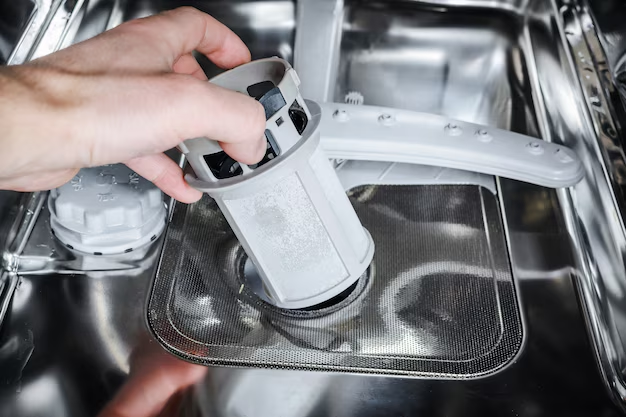How to Troubleshoot and Fix Your Frigidaire Refrigerator
Is your Frigidaire refrigerator not cooling properly, making strange noises, or showing error codes? While such issues can seem daunting, many common refrigerator problems can be resolved without the need for professional repair. This guide will walk you through the most frequent issues with Frigidaire refrigerators and provide practical tips to restore your appliance to proper working order.
Understanding Common Issues with Frigidaire Refrigerators
Before diving into specific fixes, it's helpful to understand common problems that Frigidaire refrigerator owners face. This knowledge will empower you to diagnose and address issues effectively.
Temperature Problems
Refrigerators are sensitive appliances, and maintaining the correct temperature balance is crucial. Common symptoms of temperature issues include the fridge not cooling sufficiently or the freezer being too cold.
Possible Causes:
- Blocked air vents
- Faulty thermostat
- Dysfunctional evaporator fan
Strange Noises
Unusual sounds can be worrying, and in a refrigerator, they might indicate various underlying issues. These noises can range from buzzing, clicking, or humming.
Possible Causes:
- Uneven placement
- Faulty compressor
- Loose components
Water Leakages
Finding a puddle beneath your refrigerator is never a welcome discovery. Fortunately, most water leaks are usually fixable at home.
Possible Causes:
- Blocked defrost drain
- Leaky water inlet valve
- Damaged water filter
Error Codes
Modern Frigidaire refrigerators often display error codes to indicate specific malfunctions. Understanding these codes can be a simple way to identify potential problems.
Common Error Codes:
- SY EF: Indicates an evaporator fan circuit error.
- FF: Signals a failure in the auto defrost function.
- CF: Compressor relay failure.
Step-by-Step Fixes for Frigidaire Refrigerator Issues
Now that you're familiar with the common types of problems, let's delve into how you can fix them.
Addressing Temperature Problems
Check and Adjust Thermostat:
- Locate the thermostat knob or digital control panel.
- Ensure the setting is not too low or set to ‘low cooling.’
- Adjust to the recommended temperature (usually around 37°F for the fridge and 0°F for the freezer).
Ensure Airflow:
- Check that the air vents inside are not blocked by food items.
- Reorganize if necessary to allow proper air circulation.
Inspect the Evaporator Fan:
- Unplug the refrigerator and locate the fan, usually behind a panel in the freezer.
- Ensure it spins freely and replace if damaged.
Resolving Unusual Noises
Level the Refrigerator:
- Use a bubble level to check if the appliance is uneven.
- Adjust the leveling legs until the fridge sits evenly on the floor.
Inspect the Compressor:
- While noise from the compressor is normal, abnormally loud sounds may indicate a problem.
- Check for loose components and tighten them.
Secure Loose Parts:
- Inspect internal parts like fan blades and shelves.
- Secure any loose components to reduce noise.
Fixing Water Leakages
Clear the Defrost Drain:
- Unplug the refrigerator and locate the drain (usually at the back or bottom).
- Use warm water or a pipe cleaner to clear blockages.
Check the Water Inlet Valve:
- Inspect the valve for cracks or leaks.
- Replace the valve if it’s damaged.
Examine the Water Filter:
- Ensure it's properly installed and not past its replacement date.
- Replace if needed, following the manufacturer’s instructions.
Understanding and Clearing Error Codes
SY EF: Check the evaporator fan circuit. Ensure all connections are tight. Consider fan replacement if the code persists.
FF: Defrost the freezer manually and check the auto defrost function. Consult the manual for detailed steps.
CF: Look for issues with the power supply to the compressor. Verify connections and replace the relay if necessary.
Preventive Maintenance Tips
Preventative maintenance can extend the lifespan of your Frigidaire refrigerator and minimize future issues.
Regular Cleaning
Interior and Exterior Cleaning:
- Wipe down the surfaces monthly with a mild detergent.
- Ensure door seals are debris-free for a tight seal.
Condenser Coils:
- Clean coils located under or behind the refrigerator every six months to ensure efficient operation.
Organized Storage
- Fridge Organization:
- Avoid overloading to maintain proper air circulation.
- Use bins or compartments for sorting items logically.
Routine Checks
- Temperature and Noise Monitoring:
- Regularly check internal temperatures with a thermometer.
- Note any changes in appliance sounds and address them promptly.
Quick Troubleshooting Tips 🧰
Here's a handy list of quick tips for repairing and maintaining your Frigidaire refrigerator:
- 🔧 Keep the manual handy for reference when diagnosing error codes.
- 🌬️ Ensure air circulation by keeping vents unobstructed.
- 💧 Regularly replace the water filter as per the guidelines.
- 🔍 Conduct monthly inspections for signs of leaks or noise.
- 🛠️ Invest in quality tools for DIY repair and maintenance.
Understanding how to troubleshoot minor issues with your Frigidaire refrigerator can save you time, effort, and unnecessary repair costs. Regular maintenance and awareness of common problems are essential practices that can ensure your appliance's longevity and performance.
Whether it’s temperature anomalies, strange noises, or frustrating leaks, this guide equips you with practical insights to take charge of your Frigidaire refrigerator. Remember, a well-maintained refrigerator not only performs better but also contributes to prolonging the shelf life of your food.
